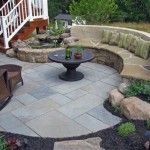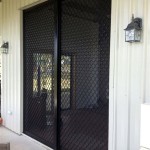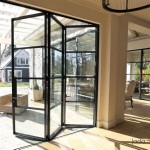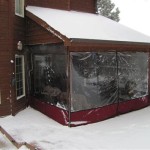```html
How To Build A Gazebo on Concrete Patio
Constructing a gazebo on an existing concrete patio can enhance the aesthetic appeal of a backyard and provide a functional outdoor living space. This project requires careful planning, selection of appropriate materials, and adherence to safety guidelines. This article outlines the necessary steps for successfully building a gazebo on a concrete patio, covering everything from permits and preparation to final assembly and securing the structure.
Before commencing any construction, it is essential to verify local building codes and obtain the necessary permits. These regulations often govern the size, location, and construction methods of structures such as gazebos. Contacting the local building department will help determine the specific requirements for the property and ensure compliance. Failure to adhere to these regulations can result in fines or the need to dismantle the structure.
Once permits are secured, the next step involves selecting a suitable gazebo kit or designing a custom structure. Prefabricated gazebo kits offer convenience and often come with detailed instructions, while custom designs allow for greater flexibility in terms of size and style. Regardless of the choice, selecting weather-resistant materials is crucial for ensuring the longevity of the gazebo. Pressure-treated lumber, cedar, or composite materials are common choices for the frame, while roofing materials may include asphalt shingles, metal roofing, or wood shakes.
The foundation is a critical element for the gazebo, especially when building on an existing concrete patio. While the concrete provides a solid base, the gazebo needs to be securely anchored to prevent movement from wind or other external forces. There are several methods for anchoring the gazebo to the concrete, which will be discussed in detail below.
Key Point 1: Planning and Preparation
The planning phase is paramount to the success of a gazebo construction project. This involves several key considerations, including gazebo size, style, location on the patio, and material selection. Begin by measuring the available space on the concrete patio and determining the maximum dimensions of the gazebo. Ensure sufficient clearance around the gazebo for comfortable movement and access. Consider the orientation of the gazebo in relation to the sun and prevailing winds to maximize shade and minimize exposure to harsh weather conditions.
Creating a detailed plan or blueprint is highly recommended. This plan should include dimensions, material lists, and construction details. A well-defined plan serves as a roadmap throughout the project and helps prevent errors or omissions. If opting for a custom design, consider consulting with a structural engineer or experienced contractor to ensure the structural integrity of the gazebo. They can provide valuable insights and help identify potential challenges.
Gathering the necessary tools and materials before starting construction is essential. This includes tools such as a power drill, circular saw, level, measuring tape, hammer, wrench set, concrete drill, and safety glasses. The specific materials required will depend on the design of the gazebo, but generally include lumber for the frame, roofing materials, fasteners, and anchoring hardware. Having all the tools and materials readily available will streamline the construction process and minimize delays.
Before commencing construction, thoroughly clean the concrete patio surface. Remove any debris, dirt, or stains that could interfere with the anchoring process. A pressure washer can be used to clean the patio effectively and create a clean surface for installing the gazebo.
Key Point 2: Anchoring the Gazebo to the Concrete Patio
Securing the gazebo to the concrete patio is a critical step to ensure its stability and prevent it from being dislodged by wind or other forces. Several anchoring methods are available, each with its own advantages and disadvantages. The choice of anchoring method will depend on the size and weight of the gazebo, the thickness and condition of the concrete patio, and the local wind conditions.
One common method is to use concrete anchors. These anchors are inserted into pre-drilled holes in the concrete and secured to the gazebo's base using bolts or screws. There are different types of concrete anchors, including wedge anchors, sleeve anchors, and expansion bolts. Wedge anchors are particularly suitable for heavy-duty applications and provide a strong and reliable connection. Sleeve anchors are easier to install and are suitable for lighter loads. Expansion bolts are another option that can provide good holding power.
To install concrete anchors, start by marking the locations for the anchor holes on the concrete patio. Use a concrete drill with a masonry bit to drill the holes to the required depth and diameter, as specified by the anchor manufacturer. Insert the anchors into the holes and tighten them according to the manufacturer's instructions. Ensure that the anchors are flush with the concrete surface and that they are securely fastened to the gazebo's base.
Another anchoring method involves using surface-mounted brackets. These brackets are attached to the concrete patio using concrete screws or adhesive. The gazebo's posts are then bolted or screwed to the brackets. Surface-mounted brackets are a good option when drilling into the concrete is not feasible or desired. However, they may not provide the same level of holding power as concrete anchors.
Chemical anchors are yet another option. These involve injecting a chemical adhesive into pre-drilled holes in the concrete and then inserting threaded rods or bolts into the adhesive. The adhesive hardens and creates a strong bond between the concrete and the threaded rod or bolt. Chemical anchors are particularly useful for anchoring to cracked or damaged concrete, as they can fill the cracks and provide a more secure connection.
Regardless of the anchoring method chosen, it is crucial to use high-quality anchoring hardware that is designed for outdoor use. Galvanized or stainless-steel hardware is recommended to prevent corrosion and ensure long-lasting performance. Regularly inspect the anchors to ensure they remain securely fastened.
Key Point 3: Assembling the Gazebo Structure
Once the foundation is prepared and the anchoring system is in place, the next step is to assemble the gazebo structure. If using a prefabricated gazebo kit, follow the manufacturer's instructions carefully. These instructions typically provide a step-by-step guide to assembling the frame, roof, and other components of the gazebo.
Start by assembling the base frame of the gazebo. This typically involves connecting the posts or columns to the base supports using screws, bolts, or other fasteners. Ensure that the frame is level and square before proceeding to the next step. Use a level to check the vertical alignment of the posts and a square to check the angles of the frame. Any adjustments should be made at this stage to ensure a structurally sound foundation.
Next, assemble the roof structure. This may involve assembling rafters, trusses, or other roof supports. Follow the manufacturer's instructions to ensure that the roof structure is properly aligned and securely fastened. The roof is a critical component of the gazebo, as it provides protection from the elements and contributes to the overall stability of the structure. Ensure that all connections are tight and secure.
Once the roof structure is assembled, install the roofing materials. This may involve installing shingles, metal roofing, or wood shakes. Follow the manufacturer's instructions for installing the roofing materials to ensure a waterproof and durable roof. Overlap the roofing materials properly to prevent leaks and ensure that all fasteners are securely in place.
Install any additional features of the gazebo, such as railings, screens, or decorative trim. These features can enhance the aesthetic appeal of the gazebo and provide added functionality. Ensure that all additional features are securely attached to the frame and that they are properly aligned.
Throughout the assembly process, it is essential to work safely and use appropriate safety equipment. Wear safety glasses to protect the eyes from debris and use gloves to protect the hands. Use caution when working with power tools and follow the manufacturer's instructions for operating them safely. If working at heights, use a ladder or scaffolding that is in good condition and properly secured. It is advisable to have a helper assist with the assembly process, especially when lifting heavy components.
After the gazebo is fully assembled, conduct a thorough inspection to ensure that all connections are tight and secure and that all components are properly aligned. Make any necessary adjustments or repairs to ensure the structural integrity of the gazebo. Apply a sealant or protective coating to the wood to protect it from the elements and extend its lifespan. Stain or paint the gazebo to match the desired aesthetic.
Building a gazebo on a concrete patio is a rewarding project that can transform an outdoor space into a relaxing and enjoyable retreat. By carefully planning the project, selecting appropriate materials, and following proper construction techniques, it is possible to create a beautiful and functional gazebo that will last for years to come.
```
How To Build A Pergola On Concrete Patio In Two Days 18 Steps With Pictures Instructables

How To Build A Pergola On Concrete Patio In Two Days 18 Steps With Pictures Instructables

How To Build A Diy Pergola On Concrete Full Hearted Home

Anchoring Down A Gazebo Or Pergola Ashley French

Anchoring Down A Gazebo Or Pergola Ashley French

How To Build A Diy Pergola On Concrete Patio Remodelaholic

How To Build A Pergola On Concrete Patio In Two Days 18 Steps With Pictures Instructables

Gazebo Foundation Ideas How To Build The Right Base

Anchoring Down A Gazebo Or Pergola Ashley French

Diy One Day Gazebo
Related Posts








